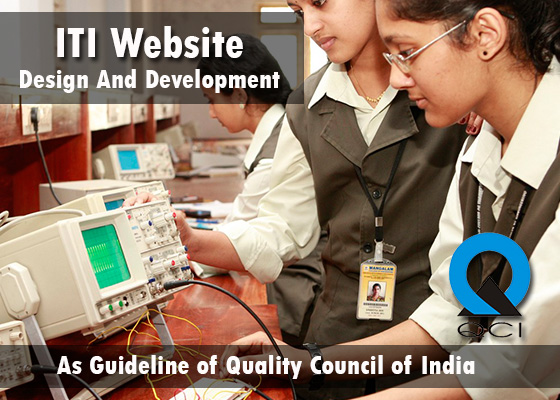Digital Forensics By Dr. Navjot Kaur Kanwal
If you are an internet user, this is a must join course for you, designed in a most illustrative manner with lot of multimedia for your better understanding. Technology has facilitated us in many ways, almost in all facets of our life. No one can deny the extent of convenience being provided by Information and communication technology but in contrast because of its anonymity, it provides a suitable platform for criminals to commit crime. In the contemporary world due to revolutionary outburst of computers and mobile phones which has led to increase in various types of cyber crimes using these digital devices and Internet. Digital Forensics is a branch of Forensic Science comprises of recovery and investigation of materials found in digital devices like a Computers, network devices, tablet or a cell phone and typically refers to the seizure, acquisition, and analysis of digital data and the presentation of the report in the courtroom.
The course is very useful for the students, lawyers, investigating officers who are keen to know and passionate about the concepts of Digital Forensics. There is continuous increase in the demand of digital forensic experts, a flourishing carrier option for those who are interested to explore this challenging profession. Other than career option, it makes you aware about different threats on the internet and how to protect yourself from all these threats.
This course is based on UGC Curriculum and presented as a four credit elective course. The objective of this course are to :
• Understand and utilize the fundamental concept of computers and digital forensics
• Students shall be prepared for various technologies/tools to combat and investigate computer and cyber crimes.
The first part deals with fundamentals of computer architecture, importance of hardware , software , input/output devices, processor, memory, storage devices, then make you learn about various file systems and encoding and decoding in computers.
The second half of the syllabus is dedicated to various types of cyber crimes and its investigation and finally we would understand some of the challenges faced in present scenario.
Course layout
Week Lecture Title of Video and Reading text/Lecture/ppt
First Week Lecture 1 Introduction to Digital Forensics
Lecture 2 Fundamentals of Computer Hardware and accessories-1
Lecture 3 Fundamentals of Computer Hardware and accessories-2
Second week Lecture 4 Computer architecture
Lecture 5 Understanding the binary number system & Conversions
Lecture 6 Encoding and Decoding formats
Third Week Lecture 7 Methods of storing data
Lecture 8 Computer Memory
Lecture 9 Development of hard disk, physical construction, CHS & LBA addressing
Fourth Week Lecture 10 Processor
Lecture 11 Software
Lecture 12 Operating System Part I
Fifth week Lecture 13 Operating System Part II (History & Development)
Lecture 14 Understanding file system –I
Lecture 15 Understanding file system-II (file formats )
Sixth Week Lecture 16 Networking and types of networks
Lecture 17 Networking Devices
Lecture 18 Internet
Seventh Week Lecture 19 The Internet Protocols
Lecture 20 Definition and types of computer crimes
Lecture 21 Distinction between computer crimes and conventional crimes.
Eighth week Lecture 22 Basic Concepts of Network security –I
Lecture 23 Basic Concepts of Network security –II
Lecture 24 Encryption and decryption methods
Ninth Week Lecture 25 Types of computer crimes-l
Computer virus, and computer worm, Trojan horse, trap door, super zapping, logic bombs.
Lecture 26 Types of computer crimes-ll
Social media crimes, intellectual property crimes, cyber pornography& child pornography, cyber terrorism, hate speech and cyber security
Lecture 27 Types of computer crimes –lll
Tenth Week Lecture 28 Seizure of suspected computer. Preparation required prior to seizure
Lecture 29 Legal and privacy issues in computer forensics
Lecture 30 Open and Proprietary tools for Digital Forensics
Eleventh week Lecture 31 Disk Forensics
Lecture 32 Digital Forensics-Memory & Network forensics
Lecture 33 Computer forensic investigation Restoration of deleted files, Password cracking, Email tracking
Twelfth week Lecture 34 Digital Forensics - Mobile phone Forensics
Lecture 35 Digital Forensics - forensics
Lecture 36 Relevant law to combat computer crime –Information Technology Act
Thirteen week Lecture 37 Discussion on Practical aspects of IT Act
Lecture 38 New challenges of computer forensic-I
Lecture 39 New challenges of computer forensic- II
Books and references
• Bayuk, J. (2010). CyberForensics: Understanding information security investigations. Springer Science & Business Media.
• Casey, E. (2009). Handbook of digital forensics and investigation. Academic Press.
• Casey, E. (2011). Digital evidence and computer crime: Forensic science, computers and the internet. Academic Press.
• EC-Council. (2016). Computer forensics: Investigating network intrusions and cybercrime (CHFI). Cengage Learning.
• Holt, T. J., Bossler, A. M., & Seigfried-Spellar, K. C. (2015). Cybercrime and digital forensics: An introduction. Routledge.
• Nelson, B., Phillips, A., & Steuart, C. (2014). Guide to computer forensics and investigations. Cengage Learning.
• Rajaraman, V. (2008). Computer basics and C programming. PHI Learning Pvt.
• Robertazzi, T. (2011). Basics of computer networking. Springer Science & Business Media.
• Sammons, J. (2012). The basics of digital forensics: The primer for getting started in digital forensics. Elsevier.
• Santanam, R., Sethumadhavan, M., & Virendra, M. (2010). Cyber security, cyber crime and cyber forensics: Applications and perspectives: Applications and perspectives. IGI Global.
• Wempen, F. (2014). Computing fundamentals: Introduction to computers. John Wiley & Sons.
Summary
Course Status : Upcoming
Course Type : Elective
Duration : 16 weeks
Start Date : 05 Jul 2021
End Date : 23 Oct 2021
Exam Date :
Enrollment Ends : 31 Aug 2021
Category :
Library and Information Sciences
Credit Points : 4
Level : Undergraduate/Postgraduate
ITI Student Resume Portal
रिज्यूम पोर्टल का मुख्य उद्देश्य योग्य छात्रों की जानकारी सार्वजनिक पटल पर लाने की है जिससे जिन्हें आवश्यकता हो वह अपने सुविधा अनुसार छात्रों का चयन कर सकते हैं

